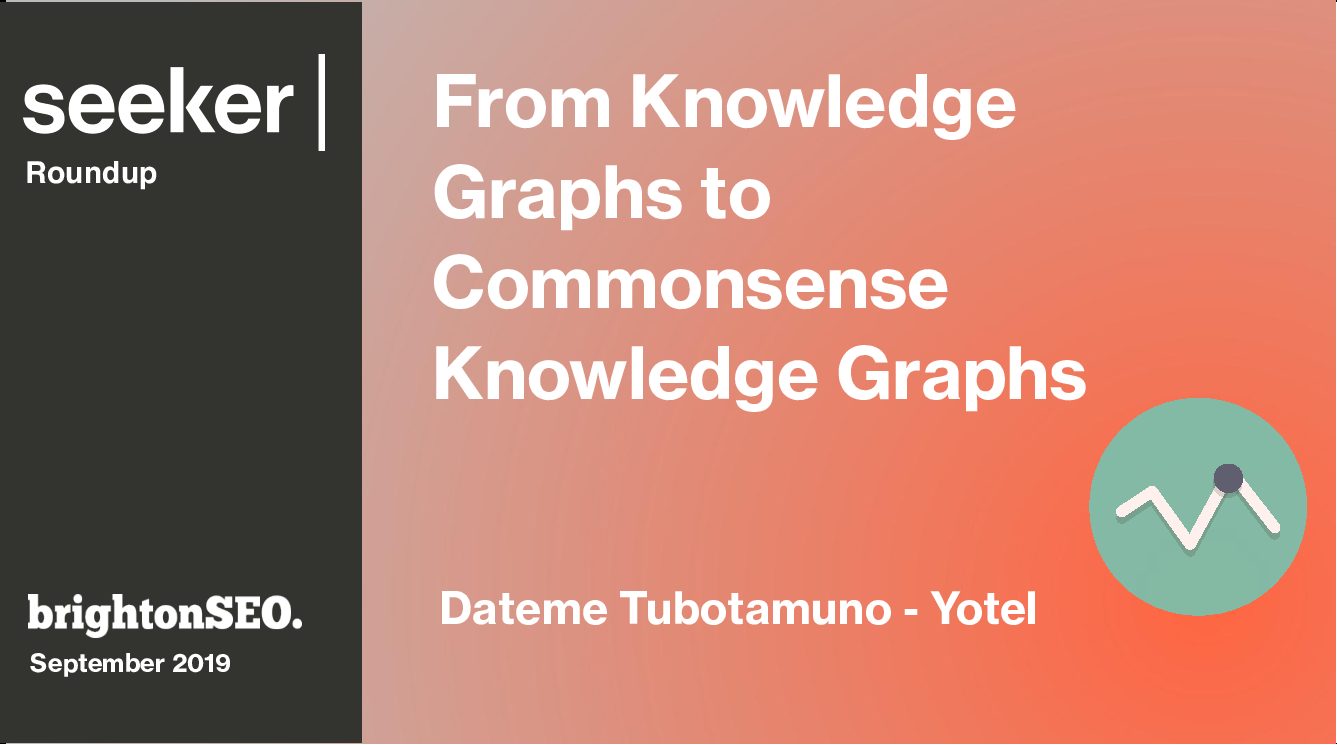
Knowledge graphs are helping to codify online information, detailing specific entities and how they related to one another. But what about general information? That’s where commonsense knowledge graphs enter the picture, as Dateme Tubotamuno usefully explained.
Overview
Speaker: Dateme Tubotamuno
Position: Digital Marketing Manager
Company: Yotel
Twitter: https://twitter.com/datemeT
LinkedIn: https://www.linkedin.com/in/datemetubotamuno/
Slides: https://www.slideshare.net/DatemeTubotamuno/from-knowledge-graph-to-commonsense-knowledge-graph-brighton-seo
What was the talk about?
Most people in the SEO world have heard of knowledge graphs. They set out essential snippets of information about entities in a factual and neutral way. For instance, a person might have their date of birth, nationality and marital status tagged, all through very simple markup.
Commonsense knowledge graphs, however, focus on properties and connections that most people know but computer systems don’t: information that’s subjective, biased, probabilistic, and complex. For instance, a motorbike is typically understood to be dangerous, regardless of what the vehicular stats say about accident rates. That association is a matter of perception, yet it’s critically important to know it when parsing text about motorbikes.
If you feed procedural knowledge and commonsense connections into chatbots, they can do a lot more with knowledge graphs, pushing them significantly closer to mimicking humans. That’s the future we’re moving towards.
Favourite quote
“While it sounds technical, it would be very useful if you were trying to understand how to structure your content, how to structure your website, and how to better understand your audience.” Commonsense knowledge graphs may seem intimidating, but give them a chance and you’ll see that they’re hugely valuable resources.
Potential impact on the industry
Not only could more companies use existing commonsense knowledge graphs to inspire their marketing (learning about common cultural associations and reacting accordingly, for example), but they could use those implicit-connections-made-explicit to greatly enhance automation.
Just imagine what a chatbot capable of understanding all the possible connections between entities could achieve — how it could take action that could almost appear creative. And for search engines, the better their algorithms can understand content, the more accurately they can gauge value and relevance, leading to better SERPs.
Key takeaways
- There are four ways of weighting the strength of a commonsense knowledge graph connection: frequency, flow, distance, and resistance.
- Webchild and ConceptNet are popular commonsense knowledge graphs.
- WordNet ontology is extremely useful for guiding website structure.
